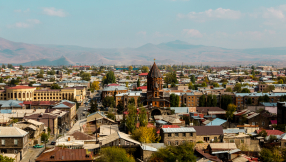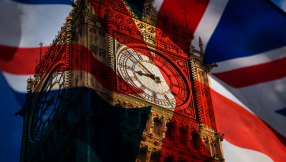The Humble Potato - Good or Bad?
Besides being good for you, potatoes were once a miracle crop. Imported to Europe from Central and South America around 1570, potatoes contributed needed calories and nutrients to the diet of the poor. Dependence on potatoes became so great that when the crop failed in Ireland in the 1840s, it led to widespread famine and massive emigration to the U.S. Today potatoes are almost universally grown--the world's most widely consumed and economically important vegetable.
The single biggest use: frozen French fries, especially at fast-food restaurants. Potatoes are indeed contributing to the obesity epidemic in the U.S., but that's primarily because they are fried or are covered in high-calorie ingredients like cheese, butter, cream, sour cream, or mayonnaise. Fast-food French fries are also a leading source of unhealthy trans fats - the stuff that clogs your arteries.
Potatoes have a bad reputation, in part, because they have a high glycemic index (GI) - a measure of how rapidly carbohydrates in foods cause blood sugar to rise. In theory, foods with a high GI are more likely to promote weight gain, but this remains unproven. Moreover, the GI looks at foods in isolation. For instance, if you eat a potato with some chicken, beef, or sour cream, its carbs are digested more slowly and blood sugar rises less.
How spuds stack up
A medium-size potato (6.5 ounces raw, about 5 ounces after baking), with its skin, has just 130 to 140 calories, virtually no fat, and 4 grams of fiber. It is one of the best sources of potassium, beating bananas handily. It's also a good source of vitamin C. But when loaded with toppings or dropped into a deep fryer, most of those health benefits begin to dwindle. Here are some nutritional comparisons:*
Baked potato, baked, 5 oz: 135 calories, 0 grams of fat
with 2 tbsp butter/margarine: 335 calories, 22 grams of fat
with 3 tbsp sour cream and 2 tbsp butter: 425 calories, 31 grams of fat
with bacon and cheese: 330 calories, 15 grams of fat
Potato salad, 5 oz: 220 calories, 13 grams of fat
Hash browns, cooked in oil/butter, 5 oz: 265 calories, 13 grams of fat
French fries, fast-food, medium, 5 oz: 435 calories, 21 grams of fat
Potato chips, 5 oz: 750 calories, 50 grams of fat
*average values
Colorful choices
About 100 potato varieties are commonly grown. They vary in shape, color, flavor, starch/sugar/moisture content, and texture. Some, like the popular russets (also called Idaho), are better for baking or mashing, others are better for roasting, boiling, or even steaming. "New" potatoes are freshly harvested and have very thin skin. Some potatoes have gold, red, purple, or blue skin, or gold, red, blue, orange, or purple flesh.
Like other colorful vegetables, rich-hued potatoes provide extra phytochemicals, including carotenoids (such as beta carotene, lutein, and zeaxanthin) and flavonoids. In fact, researchers have found that varieties with deep red or purple flesh can be as rich in antioxidants as kale, Brussels sprouts, or spinach. Colorful potatoes cost more than white ones; look for them at Asian, gourmet, health-food, or farmers markets.
Even though they are unrelated to regular potatoes, sweet potatoes are another good option. Despite their sweet taste, they have the same number of calories as regular potatoes. Ounce for ounce, they also have nearly as much beta carotene as carrots (the darker the flesh, the more beta carotene) and even more fiber than regular potatoes. They also come in a variety of colors--from yellow to violet.
Potato advice
In summary, here are some basic tips to avoid making your potato unhealthy.
- Don't eat the skin if it has a green tinge. That's chlorophyll, a sign that the potato has been exposed to too much light after harvest. It also indicates that solanine (a naturally occurring toxin) may be present in increased amounts, especially in the skin. Consuming large amounts of solanine may cause cramps and diarrhea.
- Top toppings for a baked potato: nonfat or low-fat sour cream, yogurt, or yogurt cheese. Salsa is great, too, as are leftover steamed vegetables.
- Mix mashed potatoes (homemade or dehydrated) with nonfat or low-fat milk or yogurt. Use just a little butter, soft margarine, or olive oil, or try a powdered butter substitute.
- To cut calories, dress potato salad with plain nonfat yogurt, plain or flavored vinegar to taste, prepared mustard, and herbs. Add ingredients such as celery, peppers, carrots, or apples.
- Don't wrap a potato in foil when baking it. Foil makes it steam, rather than bake, leaving the skin soggy. If you microwave your spud, do wrap it in foil or a towel for a few minutes immediately after you remove it. That completes the cooking and improves the texture.
- Don't leave a foil-wrapped baked potato sitting at room temperature for longer than a few hours. That could lead to botulism poisoning. A tight foil wrapping on an unscrubbed potato creates the perfect airless environment in which Clostridium botulinum spores flourish. The spores come from the soil and are often found on the surface of potatoes.













